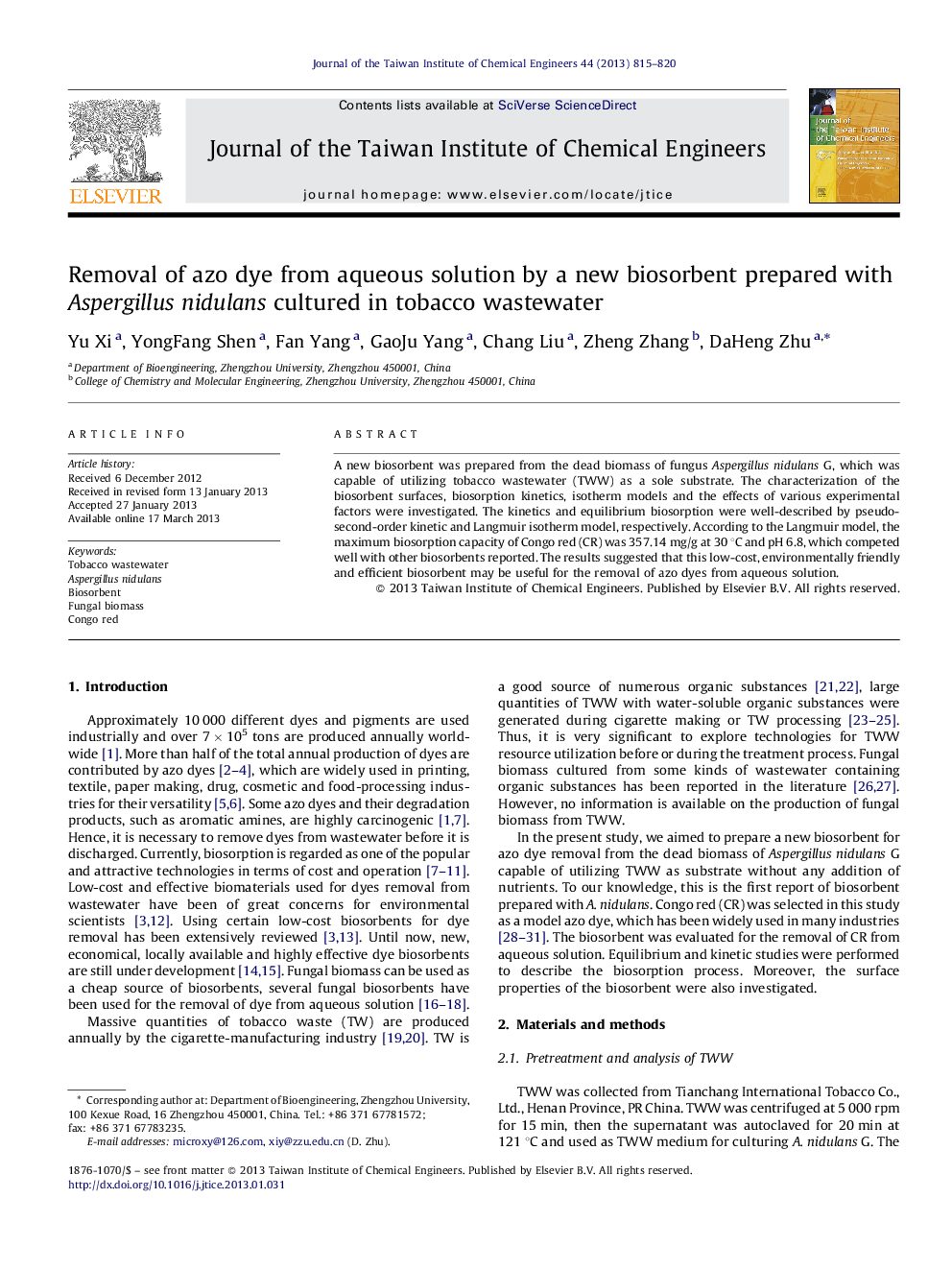| Article ID | Journal | Published Year | Pages | File Type |
|---|---|---|---|---|
| 690856 | Journal of the Taiwan Institute of Chemical Engineers | 2013 | 6 Pages |
A new biosorbent was prepared from the dead biomass of fungus Aspergillus nidulans G, which was capable of utilizing tobacco wastewater (TWW) as a sole substrate. The characterization of the biosorbent surfaces, biosorption kinetics, isotherm models and the effects of various experimental factors were investigated. The kinetics and equilibrium biosorption were well-described by pseudo-second-order kinetic and Langmuir isotherm model, respectively. According to the Langmuir model, the maximum biosorption capacity of Congo red (CR) was 357.14 mg/g at 30 °C and pH 6.8, which competed well with other biosorbents reported. The results suggested that this low-cost, environmentally friendly and efficient biosorbent may be useful for the removal of azo dyes from aqueous solution.
► Integration of biosorbent preparation and tobacco wastewater resource utilization was first proposed. ► First report on biosorbent prepared from Aspergillus nidulans biomass. ► First report on fungal biomass cultured from tobacco wastewater. ► The biosorption capacity of Congo red competes well with other biosorbents.
